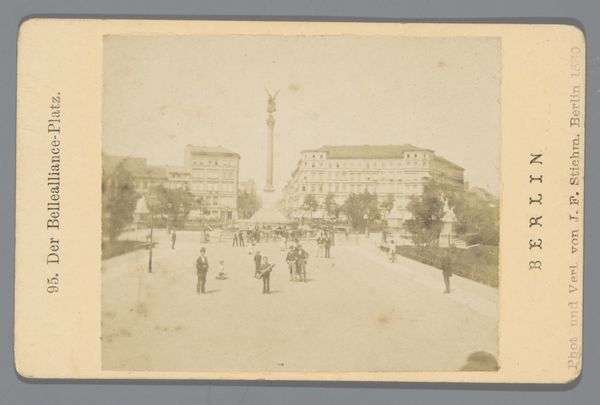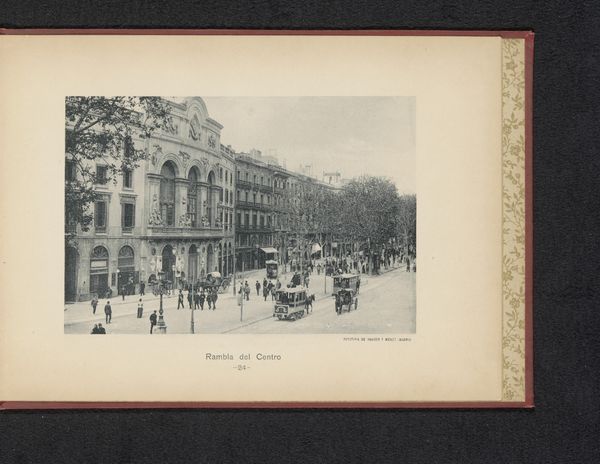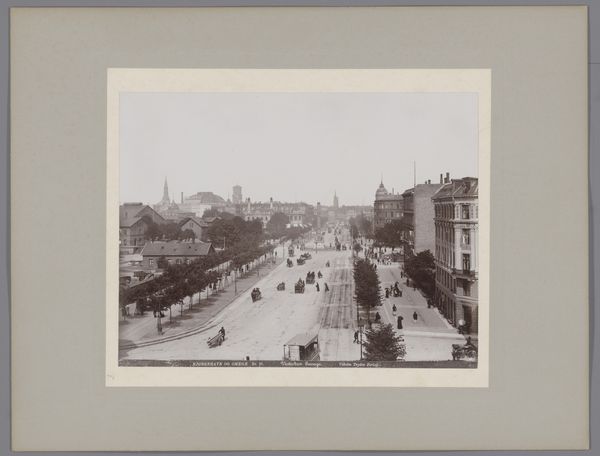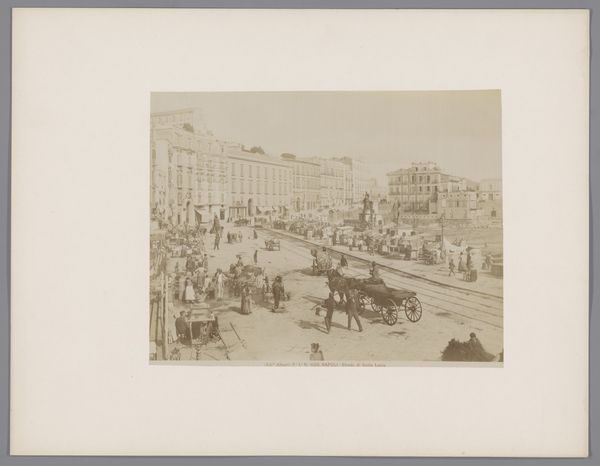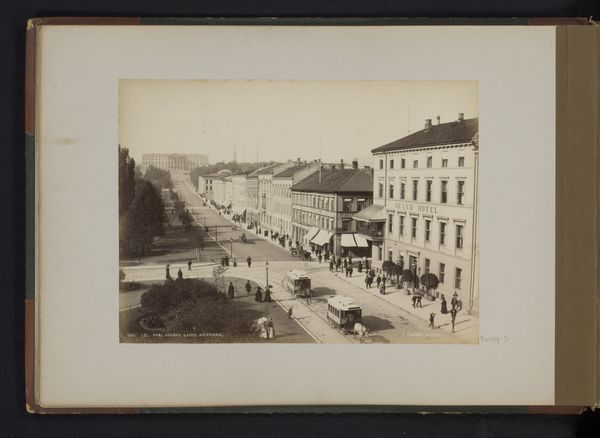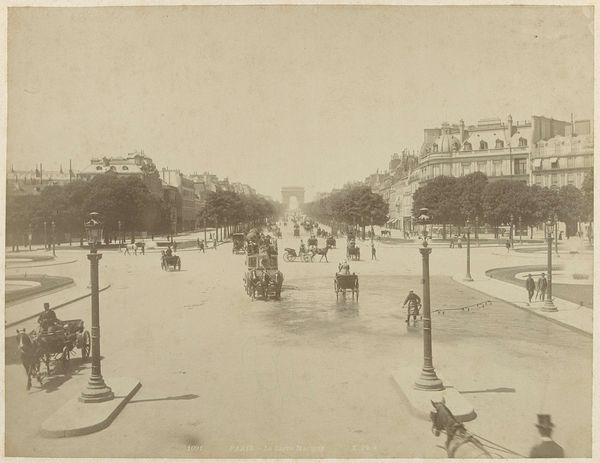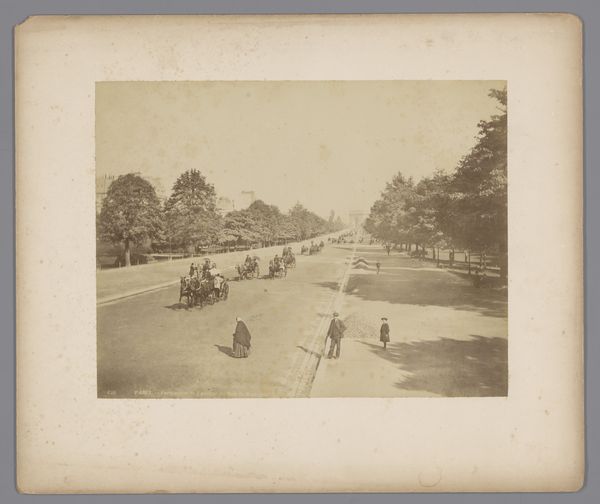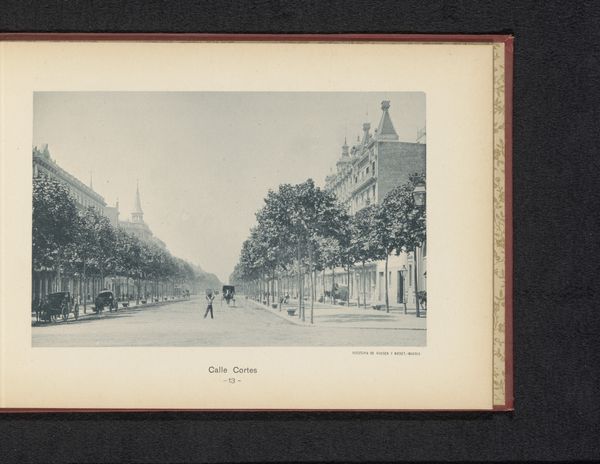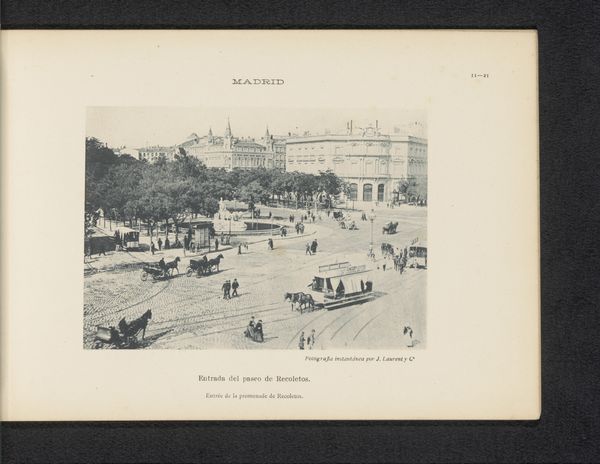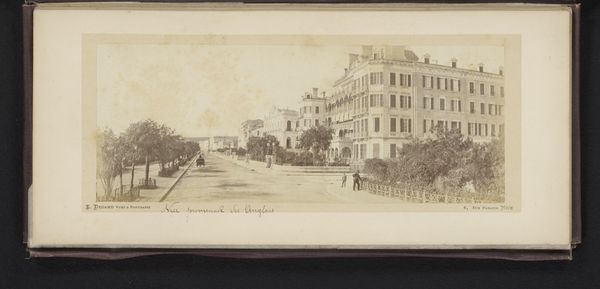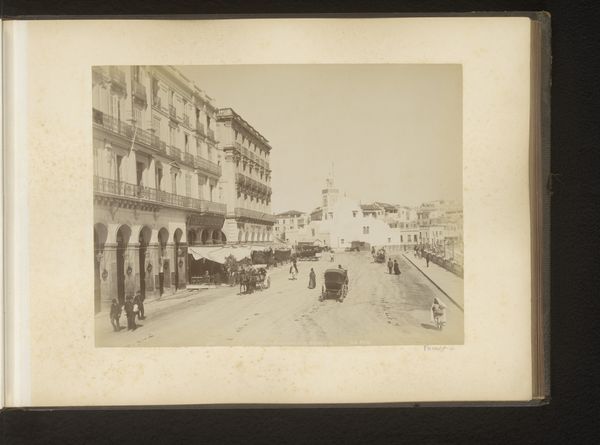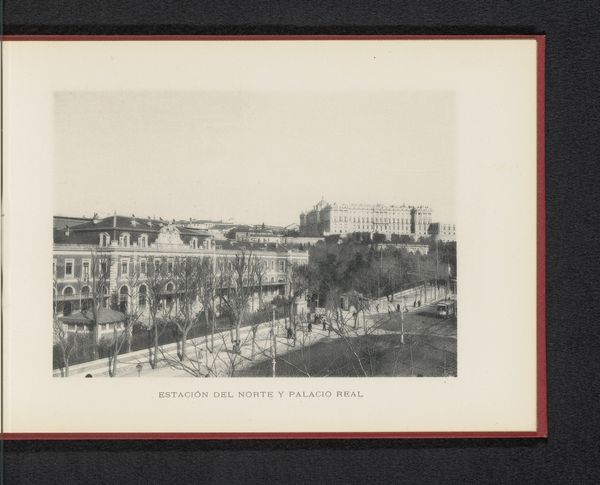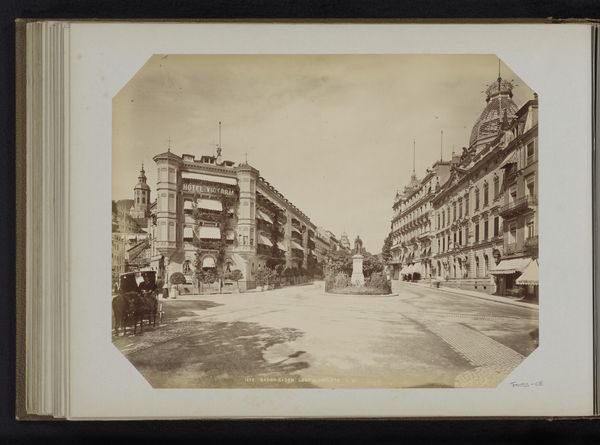
Dimensions: height 258 mm, width 355 mm
Copyright: Rijks Museum: Open Domain
Curator: This gelatin silver print, titled "Gezicht op de Champs-Élysées met de Arc de Triomphe," by Edouard Hautecoer, presents a vista of Paris taken sometime between 1890 and 1898. Editor: The first thing that strikes me is the pervasive quietude despite the depiction of a major thoroughfare. The sepia tones imbue the scene with a gentle sense of nostalgia, and even with the carriages and figures present, the image feels strangely still. Curator: Yes, that muted quality speaks volumes about the societal position of photography at the time. As a burgeoning medium, photography was actively crafting its visual language within and against established modes of painting and drawing, to construct a new public memory. Consider how it represents the ongoing reconfiguration of Paris through urban planning at the time. Editor: Absolutely. This photo captures not just the architecture, but also the social dynamics being reshaped alongside the physical city. The presence and types of the carriages, the attire of the figures, the very framing of the Arc de Triomphe—they all point to power structures and societal norms. One notices an abundance of masculine subjects and labor. Where are the other citizens of Paris? Curator: I agree; reading the image critically means asking what the visual text encodes and excludes. It gives the photograph agency as a witness and maker of that social history. Even what appears to be objective or simple documentation speaks to power and agency in the gaze. We could use a Foucauldian lens to argue that the Arc, though physically centered, is symbolically mediated. Editor: This single image also represents a specific intersection of historical factors that affect artistic creation and distribution. The Champs-Élysées wasn't just a road; it was an emblem of French ambition, redesigned precisely for images like this to broadcast French identity to the world. It would be great to situate this image alongside photographs from other national contexts. Curator: Precisely. Comparing Hautecoer’s vision with photographs of similar urban spaces from London or New York, or even images of the rapid growth in colonized cities from this time, can deepen our understanding. How the photographer sees and positions himself to such grand axes of power makes all the difference in how audiences perceive, engage with, and interpret these spaces. Editor: And with photography democratizing image-making, the ability to critique this broadcasted image by citizen and labor reporters helped reveal social hierarchies operating underneath grand urban plans like Haussmann’s reconstruction. Food for thought.
Comments
No comments
Be the first to comment and join the conversation on the ultimate creative platform.
